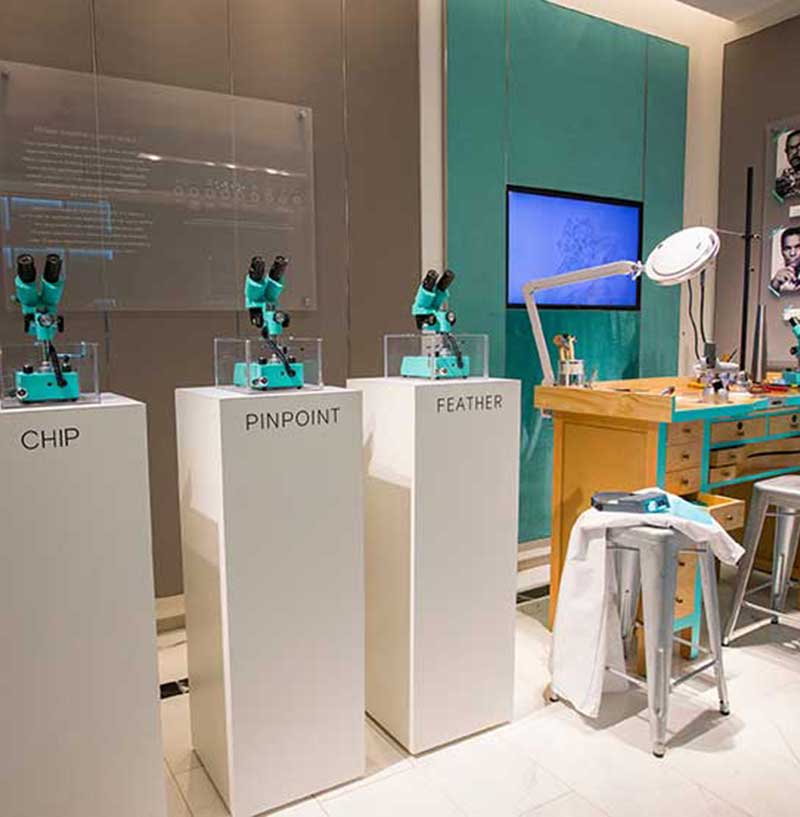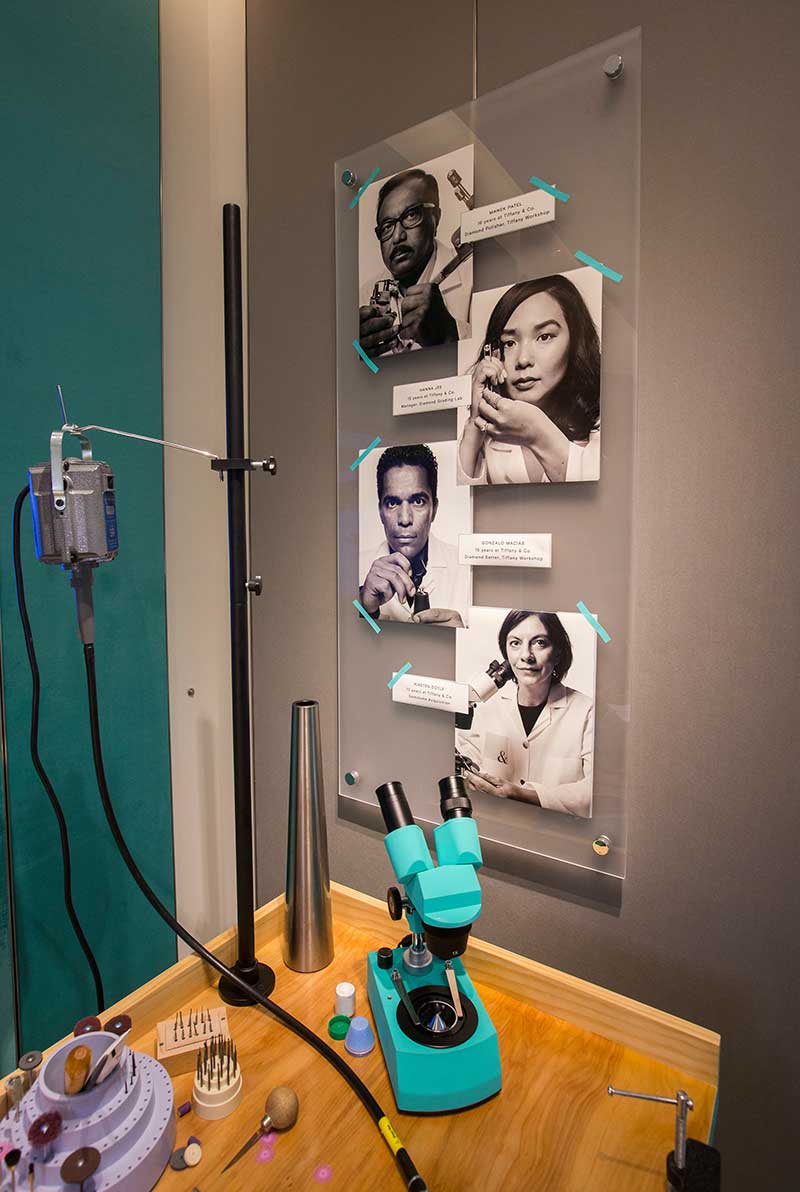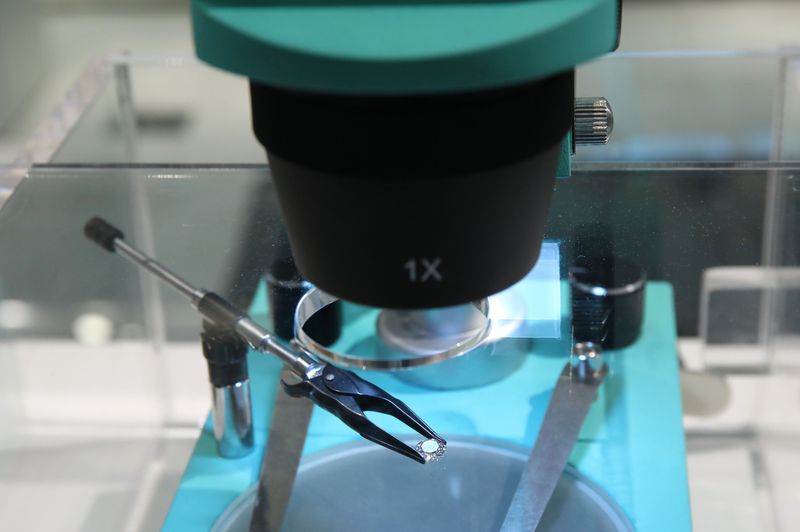Tiffany CEO Talks Brand Commitment to Diamond Transparency & Ethical Sourcing

Tiffany & Co. unveiled The Diamonds of Tiffany installation, a visual, experiential installation, exclusive to Chicago, that walks you through how a diamond is being made, from start to finish. The exhibit is meant to also educate the Tiffany customer on where and how the brand sources its diamonds, an important visual representation of the jeweler’s commitment to transparency.
Tiffany CEO Alessandro Bogliolo officially opened The Diamonds of Tiffany installation last week in Chicago and we caught up with him to chat about diamond provenance and ethical sourcing, as well as how he plans on attracting a new generation of shoppers.
Why did you choose the Chicago store as the exclusive location of The Diamonds of Tiffany installation?
Because Chicago is one of our most important markets. It is such a beautiful store, so very rich in inventory and in expertise. So the installation is a tribute to an important city and important store and a beautiful team of people that are very, very knowledgeable.
What should customers expect?
This installation has been conceived in order to try and make it more experiential and customer facing. What Tiffany does with diamonds is really unique. So we want to have this educational moment for our clients. The installation shows how Tiffany sources 80 to 90 percent of our solitaire diamonds directly from mines, [until the finished product]
We select the mines based on quality standards — not just of the stones — but also safety of the mines, no child labor, protection of the environment, countries where there is no human rights infringement. Then we purchase the rough diamonds and send them to the workshops. Internally, we have five workshops and in total, 1500 artisans who cut and polish the diamonds. And then, the diamonds get set in the US in a beautiful piece of jewelry.

How does Tiffany differ from other jewelers when it comes to sourcing and transparency of its diamonds?
Tiffany’s approach is unique because typically jewelers buy diamonds on the wholesale market. And what’s the problem with that? Buying it on the wholesale market means that you don’t know the origin of that diamond. You are certified that this is a non-conflict diamond, which means it didn’t finance terroristic activities, but that’s all. While Tiffany goes directly to the mine. For example, we don’t buy diamonds from Zimbabwe because of the human rights infringement in the country, or we know where our diamond is cut and polished because it’s our own employees. We also give standards to our cutters and polishers to maximize not the carat but the symmetry of the diamond, which is typically not what the industry does. Because the industry tries to take out all that rough stone, the biggest possible diamond differently.
At Tiffany we try to get the most symmetrical diamond even if we lose a lot of diamond in dust. But we do that because symmetry is what guarantees the most brilliance of the diamond. So it has do with quality, it has to do with sustainability and with traceability, because that ultimate goal is that a diamond should have nothing opaque in it. Tiffany is the only brand that provides you with a certificate, whether it is the color, the cut, the clarity of the stone, but also the country where the stone comes from. And I think it’s an important point for customers.
It’s a huge point. It directly affects sustainability and shows your commitment as a brand to transparency. Is this the Provenance Tool you launched in early 2019?
Yes. What we started earlier this year is sharing with the customer the country or region of the diamond. And this is important because it’s an easy, tangible way for customers to understand the work that that is behind it. But the fact of sharing the country of origin is the tangible sign of how knowledgeable Tiffany is internally in terms of craftsmanship, but also tracing the journey of the diamond.
So in addition to that, how far do you want to take Tiffany’s commitment to sustainability in the future?
Tiffany’s sustainability commitment started in the late 90s and this started with diamonds. And it has been a process that has taken us really two decades and millions of dollars of investments, and thousands of people in training. Imagine, every diamond polisher at Tiffany requires two years of training before she or he can start actually polishing the diamond. So it’s a huge investment in talent development. But sustainability at Tiffany goes also in the metals. So, for example, we source our metals — platinum, gold and silver – from known mines in the U.S. that we certify for the way they mine; or, we source our metals from recycled precious metals. So the commitment in terms of the product has been here for many years.
But then there’s the commitment in terms of our people. So we are very proud of having the majority of our employees to be women, 45 percent of our board is women. We employ people of all ethnic groups and languages.
And the third point is the planet and the environment. Tiffany has a long history of sustainable initiatives around the world, like Save the Wild Initiative, which protects the wildlife, especially in Africa. We developed a collection of elephant and rhino brooches and 100 percent of the profits go to the Save the Wildlife Initiative. But we are also involved in many other projects via the Tiffany Foundation. One, for example, is on the West Coast. During the Gold Rush there were huge areas that were damaged during the gold mining, and we started financing various groups that recover those areas and bring them back to natural life. We have also invested in the underwater world and have invested in protecting the corals.

Thank you for that. Especially in this day and age when our planet is literally collapsing in front of our very eyes we all need to do something, small or big. So I personally really appreciate Tiffany’s commitment to environmental causes.
And I’m very proud of these. And I don’t want to take the merit of this because it started decades ago by my predecessors. But, you know, we live in a time when the fashion industry, the luxury industries started talking about sustainability. Which is good because it’s the first step. But it’s a lot of statements. It’s a lot of promises. And I’m so proud that this company is so far advanced thanks to initiatives that started very quietly 20 years ago Back then, this was considered nonsense. But sustainability is really part of the culture of the company, and is one of the many reasons I am so proud of this brand.
You’ve been at the helm of Tiffany for about two years now. You are known for your vision and execution. What are your plans for Tiffany? How do you plan to keep that tradition within the company, but at the same time modernize it for the new generation?
That’s a great question. Many people, even in the U.S., don’t know how rich the legacy of this brand is. This brand was founded in 1837. The Tiffany setting was created in 1886. So imagine in 1886, it was the first modern diamond ring, set on six prongs. And in was created in that a way so the diamond could really be totally brilliant. And that design became the symbol of love. Generations have declared their love with that ring. The legacy of this brand is amazing.
I see my job not as a repositioning, because there is nothing to reposition at Tiffany. The history of this brand is so pristine; this brand has always been very clean, very properly managed. The challenge we have is bringing this legacy into the future. And what I always tell my people is that we have received a beautiful book with many, many pages. We have to write the next few pages and then hand it of our successors.
Which are the pages that you want to write?
We want to evolve the perception of Tiffany as the world premiere jeweler. But [a jeweler] that is relevant, first of all, to self-empowered women, who are nowadays the purchasers of jewelry. Traditionally, in the past, jewelry was purchased by men for women, and at the time Tiffany was the prescription of elegance.
Now our clients, our customers, are finally women who buy for themselves. And this is something that has taken years. So it’s not something that, you know, I’m changing. I’m not changing anything. I’m just pushing it forward. And going forward means to accelerate the pace of innovation, of new designs, which is a beautiful challenge for us in the future. At the end of the day Tiffany stands for diamonds, it stands for refinement, and it stands for love, joy and celebration.
___
This interview has been edited for length and clarity.
The Diamonds of Tiffany installation is available in the Michigan Avenue store for six months, and Chicago is the first city in North America to experience it.
Anna Marevska is the Editor of FashionFiles. She is responsible for the overall editorial direction of the site and writes runway stories, designer profiles, and trend reports.

